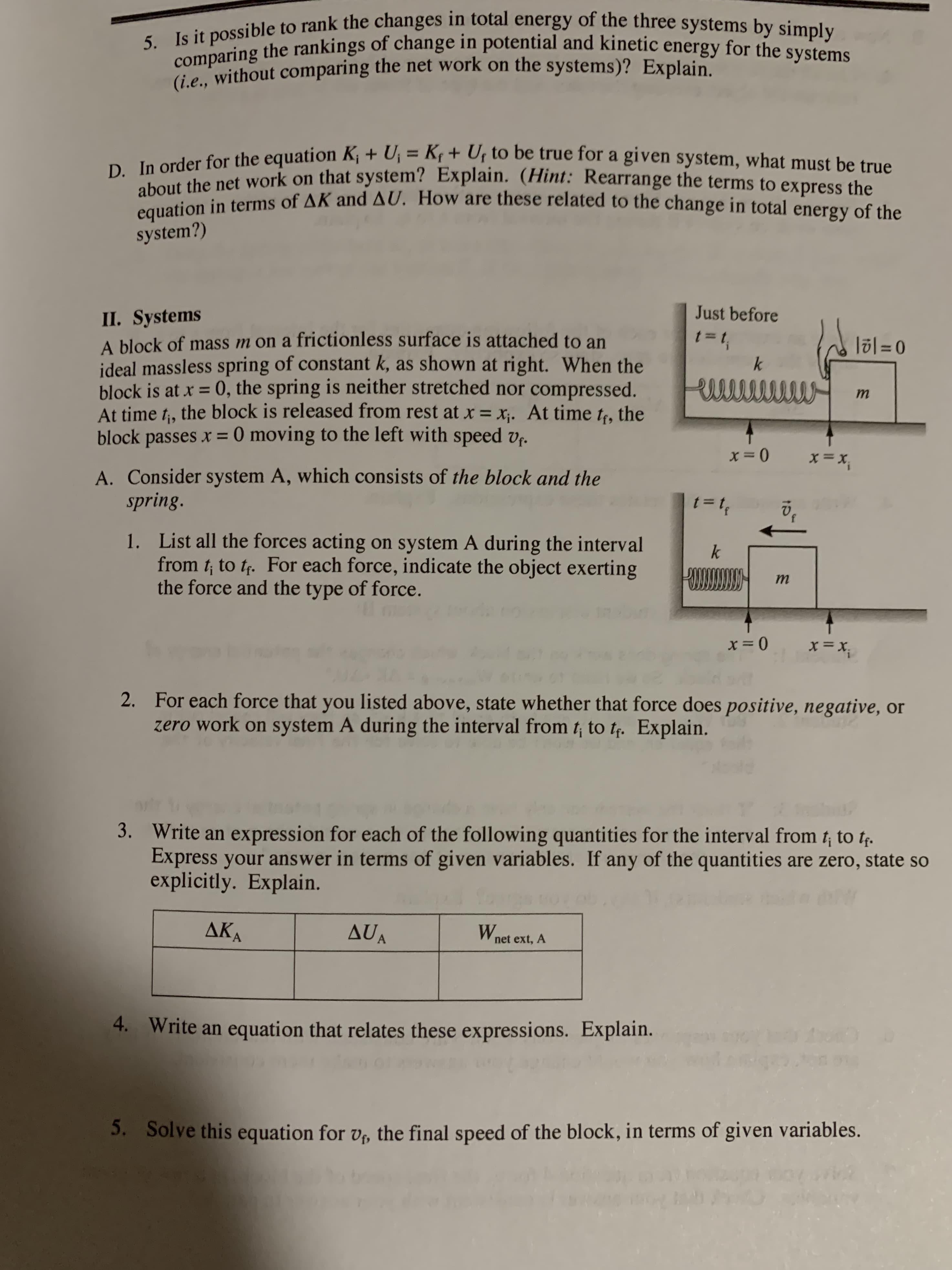Just before II. Systems A block of mass m on a frictionless surface is attached to an ideal massless spring of constant k, as shown at right. When the block is at x = 0, the spring is neither stretched nor compressed. At time t,, the block is released from rest at x = x;. At time t, the block passes x = 0 moving to the left with speed vr. Tõl= 0 k x = x, A. Consider system A, which consists of the block and the spring. 20 1. List all the forces acting on system A during the interval from t; to tr. For each force, indicate the object exerting the force and the type of force. k m x =0 x=x, 2. For each force that you listed above, state whether that force does positive, negative, or zero work on system A during the interval from t; to tf. Explain. 3. Write an expression for each of the following quantities for the interval from t; to te. Express your answer in terms of given variables. If any of the quantities are zero, state so explicitly. Explain.
Stellar evolution
We may see thousands of stars in the dark sky. Our universe consists of billions of stars. Stars may appear tiny to us but they are huge balls of gasses. Sun is a star of average size. Some stars are even a thousand times larger than the sun. The stars do not exist forever they have a certain lifetime. The life span of the sun is about 10 billion years. The star undergoes various changes during its lifetime, this process is called stellar evolution. The structure of the sun-like star is shown below.
Red Shift
It is an astronomical phenomenon. In this phenomenon, increase in wavelength with corresponding decrease in photon energy and frequency of radiation of light. It is the displacement of spectrum of any kind of astronomical object to the longer wavelengths (red) side.
could you help with section II: A, 1, 2,3, 4 and 5?

Trending now
This is a popular solution!
Step by step
Solved in 6 steps with 4 images


